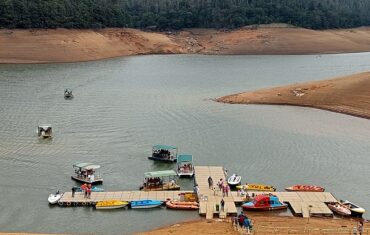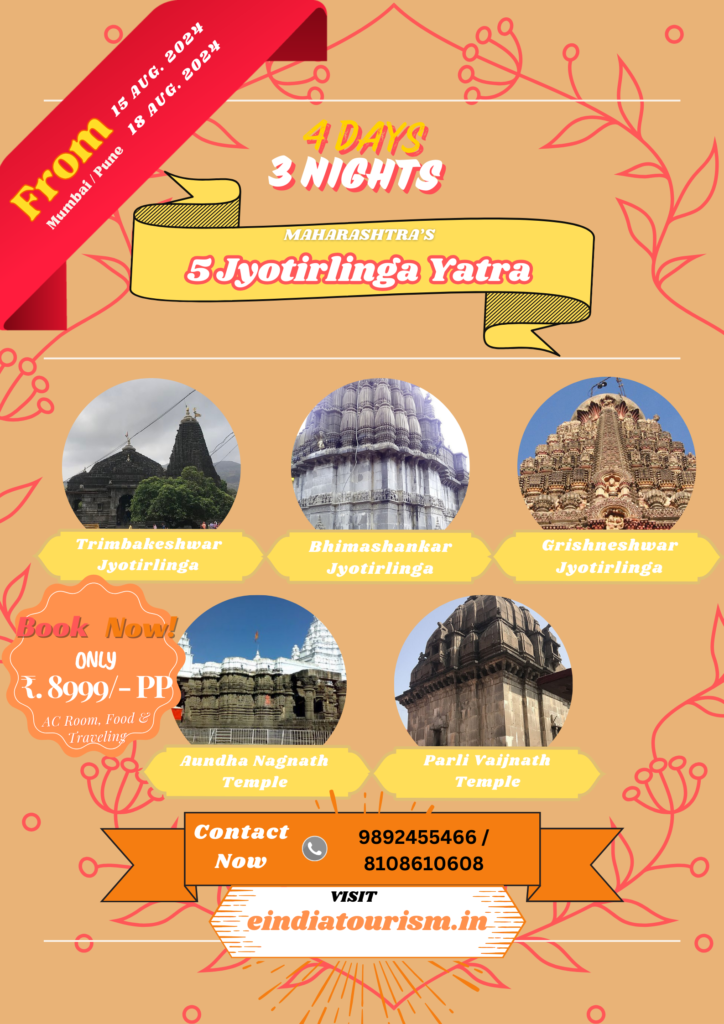Pune, the cultural capital of Maharashtra, is home to many historical monuments that reflect the glorious past of the Maratha Empire. One such monument is the Mahadaji Shinde Chhatri, a stunning edifice that stands as a tribute to one of the greatest Maratha warriors, Mahadaji Shinde. This blog aims to delve into the exquisite architecture and historical importance of Mahadaji Shinde Chhatri in Pune. Visit during One day Pune Local sightseeing By Private cab.
Table of Contents
Historical Background of Mahadaji Shinde Chhatri

Mahadaji Shinde was a prominent general of the Maratha Empire who played a crucial role in expanding its territories and restoring its prestige in the 18th century. He was also the founder of the Scindia dynasty that ruled over Gwalior and parts of central India. He was known for his bravery, diplomacy and generosity.
The Shinde family had a strong connection with Pune, as they were originally from the nearby village of Kunjirwadi. They also had their ancestral residence in Wanowrie, where Mahadaji Shinde spent his childhood. The Shinde family contributed to the development and prosperity of Pune by building temples, gardens, palaces and forts.
Mahadaji Shinde Chhatri is a memorial that was built by his nephew and successor, Madhavrao Scindia, in 1794. It is located in Wanowrie, near the Shinde family’s residence. The chhatri is a cenotaph or an empty tomb that commemorates Mahadaji Shinde’s life and achievements. It is also a symbol of the respect and admiration that the Marathas had for him.
The chhatri reflects the cultural and historical significance of Pune during the 18th century Maratha era. Pune was the seat of power and administration of the Maratha Empire under the Peshwas or prime ministers. It was also a center of learning, art and literature. The Maratha Empire reached its zenith under the leadership of Peshwa Bajirao I and his successors, who fought against the Mughals, the British and other regional powers.
Architectural Brilliance of Mahadaji Shinde Chhatri

The chhatri is a masterpiece of architecture that showcases the fusion of Rajasthani and Mughal styles. It is built on a raised platform with three arched entrances on each side. The exterior walls are adorned with intricate carvings and detailing that depict floral motifs, geometric patterns and scenes from Hindu mythology.
The most striking feature of the chhatri is the central dome that rises above the main hall. The dome is made of stone and has a lotus-shaped finial on top. The dome is decorated with colorful tiles and paintings that create a stunning contrast with the white stone. The dome represents the sun, which is a symbol of power and glory in Hindu culture.
The interior of the chhatri is equally impressive as it houses a life-size statue of Mahadaji Shinde in his military attire. The statue is made of bronze and stands on a marble pedestal. The statue faces east, towards his birthplace Kunjirwadi. The hall also has several paintings and portraits of Mahadaji Shinde and other Maratha leaders.
The chhatri is built with local materials such as basalt, lime and sandstone. It also showcases the traditional craftsmanship and skills of the local artisans who worked on it. The chhatri is comparable to other architectural marvels in Pune and India such as Shaniwar Wada, Aga Khan Palace, Taj Mahal and Qutub Minar.
Cultural Significance and Artistic Elements of Mahadaji Shinde Chhatri

The chhatri is not only a monument but also a cultural treasure that reflects the Maratha culture and traditions. The chhatri’s artwork depicts various aspects of Maratha life such as warfare, religion, festivals and social customs. The chhatri also incorporates religious and mythological symbolism that reveals the beliefs and values of the Marathas.
One of the most prominent sculptures in the chhatri is that of Lord Ganesha, the elephant-headed god who is revered as the remover of obstacles and the patron of arts and sciences. The sculpture is placed at the entrance of the chhatri as a sign of auspiciousness and protection. The sculpture also shows Lord Ganesha holding a modak or a sweet dumpling in his trunk, which is his favorite food.
Another notable mural in the chhatri is that of Lord Vishnu, the supreme god who is considered to be the preserver and protector of the universe. The mural shows Lord Vishnu resting on a serpent called Shesha, who represents eternity and wisdom. The mural also depicts the four symbols of Lord Vishnu: a conch shell, a discus, a lotus and a mace.
The chhatri also has a temple dedicated to Lord Shiva, the god of destruction and transformation. The temple is located at the back of the chhatri and has a shivalinga or a phallic symbol that represents Lord Shiva. The temple is visited by devotees who offer prayers and offerings to Lord Shiva.
The chhatri has a profound impact on the local community and their cultural practices. The chhatri is a place of worship and celebration for the people who live nearby. The chhatri hosts various festivals and events throughout the year such as Mahashivaratri, Ganesh Chaturthi, Dussehra and Diwali. The chhatri also serves as a venue for cultural programs and performances that showcase the talent and diversity of the local artists.
Restoration and Preservation Efforts of Mahadaji Shinde Chhatri

Mahadaji Shinde Chhatri is a monument that has survived the test of time and weather. However, over the years, it has also suffered from neglect and damage due to various factors such as pollution, vandalism, encroachment and natural calamities. The chhatri has undergone several conservation initiatives to restore and preserve its original glory.
The first major restoration project was undertaken by the Archaeological Survey of India (ASI) in 1965. The ASI repaired the cracks and fissures in the structure, cleaned the carvings and paintings, replaced the damaged tiles and stones, and reinforced the foundation. The ASI also installed a fence around the chhatri to protect it from trespassers and animals.
The second major restoration project was undertaken by the Indian National Trust for Art and Cultural Heritage (INTACH) in 2008. The INTACH collaborated with the Scindia family and the Pune Municipal Corporation to carry out a comprehensive conservation plan for the chhatri. The INTACH faced several challenges during the restoration process such as lack of funds, shortage of skilled workers, unavailability of original materials and resistance from local residents.
The INTACH used various techniques and materials to restore the chhatri to its former beauty. The INTACH used lime mortar, sandstone, basalt, marble and terracotta tiles to match the original materials used in the construction. The INTACH also used traditional methods such as lime plastering, stone carving, tile laying and mural painting to preserve the authenticity of the chhatri. The INTACH also documented the history and architecture of the chhatri in detail.
The restoration efforts have had a positive impact on the monument’s structural integrity and aesthetics. The chhatri has regained its strength and stability and has become more resistant to weathering and erosion. The chhatri has also regained its color and vibrancy and has become more appealing to the eyes. The restoration efforts have also enhanced the cultural value and significance of the chhatri.
Visitor Experience and Tourism of Mahadaji Shinde Chhatri
Mahadaji Shinde Chhatri is a popular tourist attraction that attracts visitors from all over the world. Mahadaji Shinde Chhatri offers various facilities and amenities to visitors such as parking space, restrooms, drinking water, souvenir shop, cafeteria and security. The chhatri also provides guided tours that help visitors understand the history and architecture of the monument in depth.
Mahadaji Shinde Chhatri hosts various events and festivals throughout the year that showcase the culture and traditions of Pune and Maharashtra. Some of the most popular events and festivals are Mahashivaratri, Ganesh Chaturthi, Dussehra, Diwali, Shiv Jayanti and Gudi Padwa. The chhatri also organizes cultural programs and performances that feature local artists such as dancers, singers, musicians, poets and storytellers.
The visitors who have visited Mahadaji Shinde Chhatri have shared their testimonials and experiences on various platforms such as blogs, social media, travel websites and magazines. Most of them have praised the beauty and elegance of the chhatri and have expressed their admiration for Mahadaji Shinde’s legacy. Some of them have also shared their insights and learnings from their visit to the chhatri.
The visitors who want to explore more of Pune’s history can also visit nearby attractions that are connected to Pune’s past. Some of these attractions are Shaniwar Wada, Aga Khan Palace, Raja Dinkar Kelkar Museum, Parvati Hill Temple, Saras Baug Garden and Dagdusheth Halwai Ganapati Temple.
FAQ’s
Q: What is the entry fee for Shinde Chatri Pune?
A: The entry fee for Shinde Chatri is ₹10 for Indians and ₹100 for foreigners.
Q: What is Shinde Chatri famous for?
A: Shinde Chatri is a memorial dedicated to the 18th century Maratha military leader Mahadji Shinde who served as the commander-in-chief of the Maratha army under the Peshwas from 1760 to 1780. It is one of the most significant landmarks in the city and is reminiscent of the Maratha rule. It is also a masterpiece of architecture that showcases the fusion of Rajasthani and Mughal styles.
Q: When was Shinde Chhatri made?
A: Shinde Chhatri was made in 1794 by Mahadji Shinde’s nephew and successor, Madhavrao Scindia. It is a cenotaph or an empty tomb that commemorates Mahadji Shinde’s life and achievements. It is also a symbol of the respect and admiration that the Marathas had for him.
Q: What is the history of Shinde?
A: Shinde is a surname that belongs to the Scindia dynasty that ruled over Gwalior and parts of central India. The Scindia dynasty was founded by Daulat Rao Sindhia, who was adopted by Mahadji Shinde. Mahadji Shinde was a prominent general of the Maratha Empire who played a crucial role in expanding its territories and restoring its prestige in the 18th century. He was also known for his bravery, diplomacy and generosity.
Conclusion
Mahadaji Shinde Chhatri in Pune is a historical and cultural treasure that deserves to be seen and appreciated by everyone. It is a monument that honors one of India’s greatest heroes, Mahadaji Shinde. It is also a monument that showcases Pune’s rich heritage and legacy. Mahadaji Shinde Chhatri is a must-visit destination for anyone who wants to witness the splendor and beauty of Pune’s past and present.











